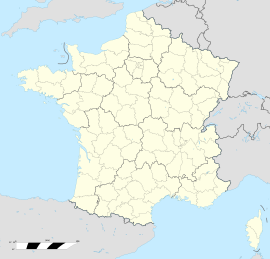Septème
| Septème | |
|---|---|
| Commune | |

Chateau
|
|
| Coordinates: 45°33′11″N 5°00′18″E / 45.5531°N 5.005°ECoordinates: 45°33′11″N 5°00′18″E / 45.5531°N 5.005°E | |
| Country | France |
| Region | Auvergne-Rhône-Alpes |
| Department | Isère |
| Arrondissement | Vienne |
| Canton | Vienne-1 |
| Intercommunality | Pays Viennois |
| Government | |
| • Mayor (2014–2020) | Alain Clerc |
| Area1 | 21.55 km2 (8.32 sq mi) |
| Population (2011)2 | 1,782 |
| • Density | 83/km2 (210/sq mi) |
| Time zone | CET (UTC+1) |
| • Summer (DST) | CEST (UTC+2) |
| INSEE/Postal code | 38480 /38780 |
| Elevation | 188–386 m (617–1,266 ft) (avg. 235 m or 771 ft) |
|
1 French Land Register data, which excludes lakes, ponds, glaciers > 1 km² (0.386 sq mi or 247 acres) and river estuaries. 2Population without double counting: residents of multiple communes (e.g., students and military personnel) only counted once. |
|
1 French Land Register data, which excludes lakes, ponds, glaciers > 1 km² (0.386 sq mi or 247 acres) and river estuaries.
Septème is a commune in the Isère department in southeastern France.
The name of Septème reflects its location: at the seventh milepost on the Roman road between Vienne and Milan. A Roman camp had been established here, on a hill overlooking the valley.
A castle was recorded here in the 11th century and the village developed next to it. During the second half of the 12th century, the site was encircled by a strong enceinte one kilometre in length with three gates. After the unification of Septème to Dauphiné, a more modern castle was constructed in the 14th and 15th centuries.
The village has grown beyond the original enceinte, and now extends as far as the river.
...
Wikipedia


